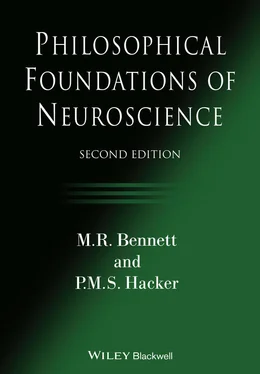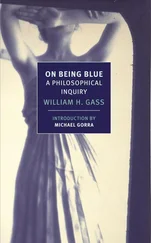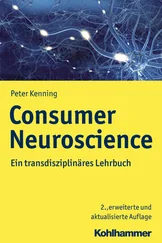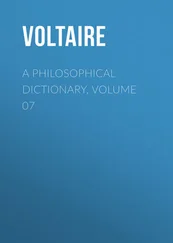In his account of perception, Aristotle distinguished the five senses (sense-faculties) and sense-organs that correspond to (four of ) them. Of course, the different sensory powers are all powers of a single unified being, the animal, with a single unified perceptual power. The senses are, Aristotle wrote, ‘inseparable, yet separate in account’ – that is, a different account is needed of the operations and mechanisms of each, but they are all constitutive elements of a unified perceptual power, and the sense-organs are all parts of a connected apparatus that he thought to be centred on the heart. The animal actually perceives only when the impulses initiated by impact on a sense-organ or any part of the body sensitive to touch are transmitted by the blood to the central sensorium in the heart. Aristotle in effect allocates to the heart the unifying functions which we allocate to the brain. 6He characterized this locus of our perceptual capacities as a ‘controlling sensory organ’ 7– wrongly so, for we do not perceive with the ‘sensorium’ (no matter whether it be the heart or the brain) in the sense in which we see with our eyes and hear with our ears, and it is not a sense-organ in the sense in which the eyes and ears are.
Aristotle emphasized that although we have different sense-faculties, and although some objects of sense (the so-called proper sensibles , e.g. colour, sound, smell, taste) are uniquely discovered by a given sense-faculty (e.g. colour by sight, sound by hearing), others, the so-called common sensibles (e.g. motion, shape, size, number, unity), are discernible by more than one sense. The latter fact is one among a number of not wholly perspicuous reasons for postulating a ‘primary faculty of perception’ or ‘primary capacity for sense’, which he occasionally refers to as the ‘common sense’ 8(and which later writers right down to the eighteenth century refer to as the ‘sensus communis’).
The sensus communis – a master organ for unifying sensibles in perception
The sensus communis is required, it seems, to explain how we can perceive common sensibles by perceiving proper sensibles (we could not see shape if we could not also see colour), and perceive them as unified attributes. For although we perceive shape, for example, both by sight and by touch, sight and touch are severally ways of detecting one and the same attribute: namely, shape (for we do not perceive, as it were, two distinct attributes, visual shape and tactile shape). Moreover, although when we perceive, say, a rose, we perceive different proper sensibles with our different sense-organs and their corresponding faculties, we perceive them as unified qualities of a single object. 9This, according to Aristotle, is a further reason for assuming a ‘single sense-faculty’ and a ‘master organ’ – the heart. Arguably, what we have here is a foreshadowing of contemporary neuroscientists’ preoccupation with the so-called binding problem , but without their Cartesian and Lockean confusion of supposing that the sensorium must produce an internal image or representation. 10Other reasons for which a sensus communis is held to be needed are as follows:
1 We do not see that we are seeing or hear that we are hearing. Nevertheless, Aristotle held, we do perceive that we are seeing or hearing – and that is one of the functions of the common sense. 11(Some contemporary neuroscientists and neuropsychologists who are engaged in the investigation of ‘blind-sight’ assign to some part of the brain the function of a self-monitoring device to fulfil the same function. 12) However, the reasoning is faulty, since we do not perceive that we see or hear; rather, when we see or hear, we can say that we do so – but not because we in any sense perceive that we do. This form of self-awareness needs elucidation, but not by this route.
2 By means of the sense of sight, we discriminate white from red, and by means of taste, we distinguish sweet from sour. But, Aristotle curiously observes, we also discriminate white from sweet and red from sour – and that neither by sight nor by taste. 13So, he infers, there must be some master faculty of perception which is employed to fulfil this function (DA 426b).
3 Since sleep affects all the sense-faculties (i.e. we do not see, hear, taste, smell or feel while asleep), waking and sleeping must be affections of one single unifying sense-faculty and controlling sense-organ. 14
Finally, Aristotle also allocated to the sensus communis the functions of (a) apprehension of time; (b) image formation by the imagination, or fantasia ; (c) memory (which, in his view, presupposes both (a) and (b)); and (d) dreaming. 15Items (b) – (d) are all functions which presuppose antecedent perception, but do not require any current use of a perceptual organ. They are, as it were, processes involving ‘decaying sense’ (or, as we might put it, ‘brain traces’ or ‘engrams’).
In these early reflections on the human faculties, on the conceptual structure necessary to describe them and their exercise, and in these arguments on the need for a sensus communis , we can see the beginnings of systematic scientific thought on the integrative action of the nervous system.
Two further points before we leave Aristotle:
The conception of pneuma
First, like Empedocles, Aristotle believed that there were four sublunary elements: earth, water, air and fire. To this list he added a further supralunary element, ‘the first element’ or ‘the first body’, subsequently called ‘the aether’, from which heavenly bodies are constituted. The sublunary elements naturally move rectilinearly (upwards or downwards). The motion of the first element, or aether, differs: it is (a) eternal, and (b) circular. There is some suggestion that Aristotle may have given some sublunary role to the first element in his biology. In De Generatione Animalium , he wrote:
Now it is true that the faculty of all kinds of soul seems to have a connection with a matter different from and more divine than the so-called elements … All have in their semen that which causes it to be productive; I mean what is called vital heat. This is not fire nor any such force, but it is the breath ( pneuma ) included in the semen and the foam-like, and the natural principle in the breath, being analogous to the element of the stars. (736 b29–737 a1)
It is difficult to know what to make of this (let alone how it is meant to be applied to the soul of plants). Cicero, writing some centuries later on the basis of lost works of Aristotle, claimed that
He thinks that there is a certain fifth nature, of which mind is made; for thinking, foreseeing, learning, teaching, making a discovery, holding so much in memory – all these and more, loving, hating, feeling pain and joy – such things as these, he believes, do not belong to any one of the four elements. He introduces a fifth kind, without a name, and thus calls the mind itself ‘ endelecheia ’, using a new name – as it were, a certain continual, eternal motion. 16
Aristotle appears, therefore, to have associated the capacities which constitute the soul with a ‘divine’ element that is incorruptible, which is a kind of vital heat or breath ( pneuma ) present in semen and responsible for generation. This pneuma was converted in the heart into vital pneuma , which was then conducted along blood vessels to muscles, where it effected contraction. The concept of pneuma was to have a long, confused history throughout the struggle to clarify the integrative action of the nervous system.
Second, it is noteworthy, and relevant to the conception of the ‘spinal soul’ that preoccupied neuroscientists in the eighteenth century (see §1.4), that Aristotle observed that ‘certain insects go on living when divided into segments’. This shows, he argued, that ‘each of the segments has a soul in it identical in species, though not numerically; for both of the segments for a time possess the power of sensation and local movement. That this does not last is not surprising, for they no longer possess the organs necessary for self-maintenance’ ( DA 411 a17ff.) The reasoning is that since the two halves of the insect continue to display sensitivity and capacity for motion, each half must have its own sensitive (and motor) soul. It is important (and relevant to the eighteenth-century debate on the spinal soul) that Aristotle did not think that the whole insect consists of a single ‘master soul’, as it were, and apart from that, two additional souls, one in each half of its body. Rather, the whole insect has a certain range of capacities, and if it is cut in half, the two halves will then have a certain more limited range of capacities.
Читать дальше












